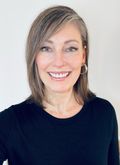ACE celebrates pockets of innovation among health-club chains. Last week, our CEO along with our President & Chief Science Officer, spent a day at the headquarters of Atlantic Coast Athletic Clubs (ACAC) in Charlottesville, VA. ACAC has figured out how to reach beyond the typical 15 to 17% of the population traditionally served by the fitness industry. The club chain has cracked the code with their Physician Referred Exercise Program (P.R.E.P). P.R.E.P. is a guided “introduction to exercise” for non-members, who pay 60 dollars for 60 days. The program welcomes participants who are fending off chronic conditions and surrounds them with their peers. Together, they learn about basic physical activity and how to incorporate it into daily life. (Disclosure: ACAC’s Medical Director serves on ACE’s Board of Directors.)
ACAC isn’t the only club chain innovating like this. For example, Newtown Athletic Club (NAC) in Newtown, PA is innovating in a similar way with its 90-day Healthy Care Program. In ACE’s observation, here is what these club chains are doing that are the key difference makers:
1. They have dramatically reduced the barriers to walking through the club’s front door. Programs like P.R.E.P. and the Healthy Care Program have a defined beginning and end, making it easy for participants to try them out without a major commitment. They’re also low cost, peer-oriented, and can be taken advantage of without a club membership and with zero pressure other than encouragement to show up and do one’s best. The programs welcome even the most timid physical-activity seekers, individuals who may have been sedentary for decades and likely don’t feel like they belong anywhere near a traditional gym. In ACAC’s case, the return on this investment is clear. They’ve found that many participants convert to members and, importantly, stay members more than three times longer than average.
2. They’ve forged relationships and trust among local health-care providers. Doctors and other providers trust evidence-based programs, which the innovators have figured out how to provide in their facilities. ACAC invested in a sales force with experience talking to health providers, and therefore have set the table for referrals to flow. Now, when patients hear the instruction, “Eat right and get more exercise,” the P.R.E.P. steps in to help them follow those instructions.
3. They utilize the right professionals for the job. The individuals assigned to work with program participants are specialists in facilitating behavior change for individuals, including those who have little to no experience attempting to make healthier choices. Behavior-change specialists use motivational interviewing and other techniques to help participants chart and follow their own course.
Many experts call for far more community-based resources surrounding physical activity, including a greater number of locations, programs, and qualified people to lead those programs which could provide regular people easy, fun, accessible, and affordable opportunities to dabble in getting moving. To the extent that is a key to the future of health improvement at the population level, and ACE (among others) believes that it is, ACAC, NAC, and others like them are harbingers of what’s to come.
If more innovators piloted what ACAC, NAC, and others are doing, more and more diverse people would discover their local health club as a key resource for exploring a more physically active life. To ACE, that would be a tremendously positive outcome.




 by
by 



 by
by